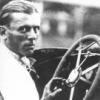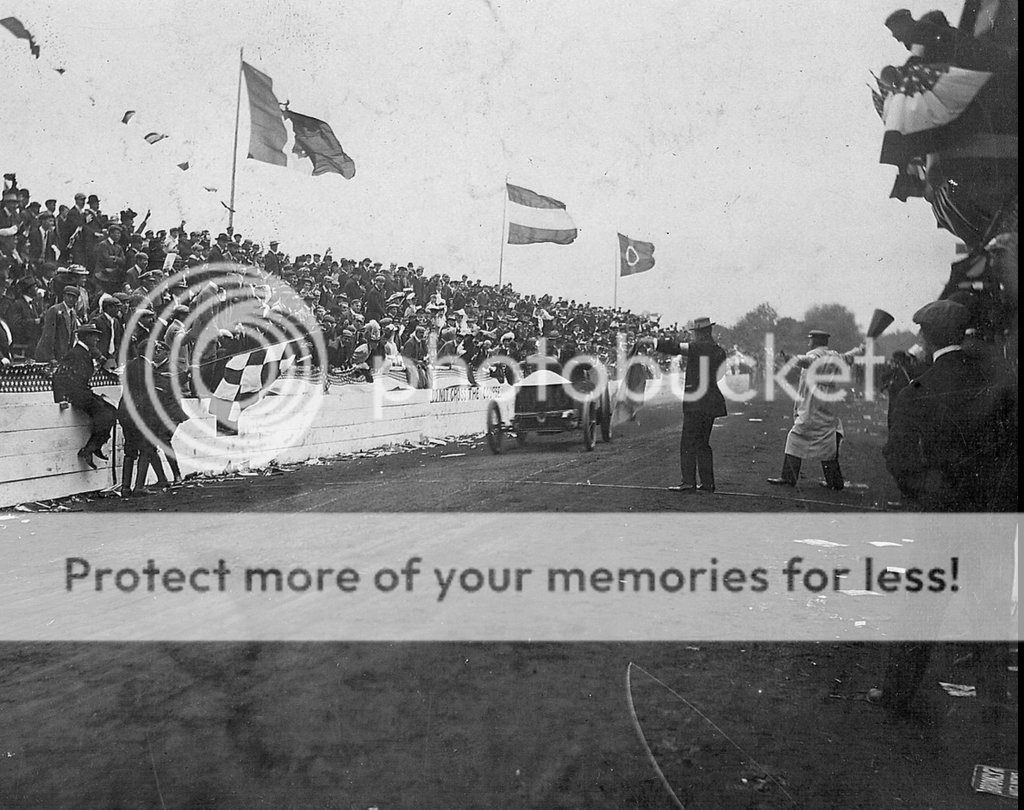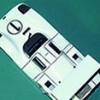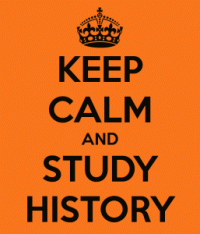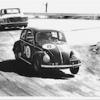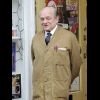
Chequered (or Checkered, if you must!) Flag [merged]
#1
![Chequered (or Checkered, if you must!) Flag [merged]: post #1](https://forums.autosport.com/public/style_images/Theo/icon_share.png)
Posted 16 June 2000 - 16:43
Help!! I compile a weekly q&a column for the Sun Times and I am keen to answer a reader's query on the origin of the chequered flag in motor racing. Any thoughts?? Many thanks, David Harbord, Sunday Times Sports Production Manager
Advertisement
#2
![Chequered (or Checkered, if you must!) Flag [merged]: post #2](https://forums.autosport.com/public/style_images/Theo/icon_share.png)
Posted 16 June 2000 - 19:05
Whilst reviewing my notes for when, so many years ago, I got my license as flag marshall, and, being guided to the 1925 AIACR rules on flags (yellow and blue, plus the chequered one) I saw a note that indicates (not sure if this is correct) that the first time the chequered was used was in Indy 1912.
But no explanation on what the black and white squares mean...
:-)
Felix
#3
![Chequered (or Checkered, if you must!) Flag [merged]: post #3](https://forums.autosport.com/public/style_images/Theo/icon_share.png)
Posted 20 June 2000 - 14:38
Who knows?
I read it was used in 1913 not 1912 and prior to this there is evidence of French bicycle races having the chequered flag used.
Tell the answer if you found out for sure.
#4
![Chequered (or Checkered, if you must!) Flag [merged]: post #4](https://forums.autosport.com/public/style_images/Theo/icon_share.png)
Posted 21 June 2000 - 03:07
#5
![Chequered (or Checkered, if you must!) Flag [merged]: post #5](https://forums.autosport.com/public/style_images/Theo/icon_share.png)
Posted 21 June 2000 - 03:23
Is there by any chance a picture on the web of the cover? Or if you have it or have seen it can you possible have time to scan it and post on the BB? It would be great to have a picture of it even in digital format.
#6
![Chequered (or Checkered, if you must!) Flag [merged]: post #6](https://forums.autosport.com/public/style_images/Theo/icon_share.png)
Posted 21 June 2000 - 03:25
#7
![Chequered (or Checkered, if you must!) Flag [merged]: post #7](https://forums.autosport.com/public/style_images/Theo/icon_share.png)
Posted 21 June 2000 - 03:29
#8
![Chequered (or Checkered, if you must!) Flag [merged]: post #8](https://forums.autosport.com/public/style_images/Theo/icon_share.png)
Posted 22 June 2000 - 03:09
However, I did stumble on this info from the AAA Contest Board concerning flags as they were used in the late 1930's:
Green - Starts race & indicates clear course during race
Yellow - Caution, maintain position
Orange with large Blue circle - the passing flag, someone is attempting to pass
Red - stops the race
White - stop for consultation (!)
Blue - indicates starting the last lap of the race
Checkered - ends race
There is no mention of the black flag, the white flag being used instead. Interesting. Dosen't help you too much, DD, but you can use this to confuse them....
#9
![Chequered (or Checkered, if you must!) Flag [merged]: post #9](https://forums.autosport.com/public/style_images/Theo/icon_share.png)
Posted 22 June 2000 - 06:06
"According to international rules the flags are:"
Blue flag (horisontal): Keep to the right (or left)
Blue flag (waving): Attension, slow down, danger!
Black flag (sometimes red): Stop your car.
Yellow flag: All cars must stop immediately.
White flag: Danger, ambulance on the track.
Chequered flag (sometimes black): End of race.
Different flag signals seem to have been in use throughout racing history. For example in the British trials for the 1904 Gordon Bennett race the starter seem to have a flag (white?) in his hand.
[p][Edited by Leif Snellman on 06-22-2000]
#10
![Chequered (or Checkered, if you must!) Flag [merged]: post #10](https://forums.autosport.com/public/style_images/Theo/icon_share.png)
Posted 22 June 2000 - 07:01
Although later by far than the early races you are talking about it shows similar things.
In the early years 1925-1926 as well later you can see the large chequered flag pattern on the start/finnish line.
Also in the photo section for 1925 the finish photo seems to have a guy holding a black flag which he is about to wave as the winning car crosses.
#11
![Chequered (or Checkered, if you must!) Flag [merged]: post #11](https://forums.autosport.com/public/style_images/Theo/icon_share.png)
Posted 22 June 2000 - 08:07
#12
![Chequered (or Checkered, if you must!) Flag [merged]: post #12](https://forums.autosport.com/public/style_images/Theo/icon_share.png)
Posted 22 June 2000 - 10:44
http://www.starnews.com/archive/
Yes, its definitely there under May 30, 1999. It requires registration and a credit card to access the whole article though
here's the start
1 : Checkered flag at the finish line predated automobiles
Published on Sunday, May 30, 1999
One of the most frequently asked questions - and one for which there may never be a definitive answer - is, ``What is the origin of the black-and-white-checkered flag and why is it used to signal the end of an automobile race?''
Not only can it be traced to the very beginning of motorsports, it apparently came into use in bicycle racing in France sometime in the 1860s, some 20 years before there was any such thing as an automobile.
#13
![Chequered (or Checkered, if you must!) Flag [merged]: post #13](https://forums.autosport.com/public/style_images/Theo/icon_share.png)
Posted 28 May 2001 - 10:36
A few weeks ago a friend of mine asked me a question wich,
to my great surprise, I could not answer: where does the
chequered flag comes from? It's probably the most universal
symbol of motor racing, but no one (even my friend Jabby
Crombac who is quite a bible for us french journalists) seems to
know how, when and where it was first used in automobile
racing!
I'm almost certain that the first use of flags to help the drivers
was at Le Tour de France Automobile 1899 (with yellow and red
flags having the same meaning as today), but what about the
chequered????
The oldest picture I've got of a chequered flag waved at a
winner is at the 1904 Vanderbilt Cup, but probably it was used
before. Did the aristocratic gentlemen who made most of the
motoring world in those early days bring it from one of their
favorite sports (horse racing? sailing?).
Please help me !!
FEV
#14
![Chequered (or Checkered, if you must!) Flag [merged]: post #14](https://forums.autosport.com/public/style_images/Theo/icon_share.png)
Posted 28 May 2001 - 18:35
Where did the checkered flag originate?
This is quite possibly the most frequently asked question in all of motorsports. Unfortunately, there is no definitive answer, its origin having either gone unrecorded or been lost in history.
We have talked with some of the world’s leading historians over the years, and most of them have had no idea. The most logical theory points to an emergence from within bicycle racing in France, sometime in the 1860s.
An investigation conducted back in 1950 suggested that a "bone crusher" race on a cobbled street in Paris in 1864 may have inadvertently caused the beginning when a lady in the crowd loaned a checkered scarf to an official in order that his signal to start the race might be seen by the contestants.
The only thing reasonably certain is that the checkered flag appears to have been used since the very beginning of motorsports, and if the 1864 claim is true, then the checkered flag would precede even the automobile itself by some 20 years.
#15
![Chequered (or Checkered, if you must!) Flag [merged]: post #15](https://forums.autosport.com/public/style_images/Theo/icon_share.png)
Posted 28 May 2001 - 20:14
We discussed this subject (and the reason for its design) sometime last year in http://www.atlasf1.c...p?threadid=5857
Obvious as it might sound, there were no real conclussions, and I have to reckon that your comments about 1864 looks like opening a whole new world for investigation...
Felix
#16
![Chequered (or Checkered, if you must!) Flag [merged]: post #16](https://forums.autosport.com/public/style_images/Theo/icon_share.png)
Posted 14 August 2004 - 09:30
The Vanderbildt Cup picture is interesting but as the race was an amalgam of US and European drivers etc it offers no clue as to whether the origin lies in the US or in Europe.
If tomorrow's GP is boring I'll search the old threads and summarise the alternatives that have been put forward.
#17
![Chequered (or Checkered, if you must!) Flag [merged]: post #17](https://forums.autosport.com/public/style_images/Theo/icon_share.png)
Posted 14 August 2004 - 12:09
Originally posted by jarama
bournenville, there are various threads in the history of TNF about the chequered flag. With the "Search BB" engine you can access to all of them. Carles.
ditto, and don't forget to check on checkered flags as well...
#18
![Chequered (or Checkered, if you must!) Flag [merged]: post #18](https://forums.autosport.com/public/style_images/Theo/icon_share.png)
Posted 15 August 2004 - 01:20
#19
![Chequered (or Checkered, if you must!) Flag [merged]: post #19](https://forums.autosport.com/public/style_images/Theo/icon_share.png)
Posted 18 August 2005 - 11:27
To summarise, it would seem it has its origins in bicycle racing, where it was introduced in the 1860s (why? No idea!). It seems to have migrated to motor racing sometime in the first decade of the 20th century: in view of the fact that quite a number of the early professional racing drivers had been racing cyclists, perhaps this isn't surprising.
Advertisement
#20
![Chequered (or Checkered, if you must!) Flag [merged]: post #20](https://forums.autosport.com/public/style_images/Theo/icon_share.png)
Posted 18 August 2005 - 11:54
#21
![Chequered (or Checkered, if you must!) Flag [merged]: post #21](https://forums.autosport.com/public/style_images/Theo/icon_share.png)
Posted 18 August 2005 - 13:42
I have checked a few old threads and there is not much information about precise dates and events.
It is very curious how not much attention seems to have been paid to, perhaps, the most famous symbol of racing in its early years of existence and, at present, there is no way to find its origin.
#22
![Chequered (or Checkered, if you must!) Flag [merged]: post #22](https://forums.autosport.com/public/style_images/Theo/icon_share.png)
Posted 18 August 2005 - 14:39
#23
![Chequered (or Checkered, if you must!) Flag [merged]: post #23](https://forums.autosport.com/public/style_images/Theo/icon_share.png)
Posted 18 August 2005 - 15:04
#24
![Chequered (or Checkered, if you must!) Flag [merged]: post #24](https://forums.autosport.com/public/style_images/Theo/icon_share.png)
Posted 18 August 2005 - 16:09
#25
![Chequered (or Checkered, if you must!) Flag [merged]: post #25](https://forums.autosport.com/public/style_images/Theo/icon_share.png)
Posted 18 August 2005 - 17:44
Originally posted by bigears
I made a similar thread when I first joined up in this forum:
Click here...
Thankyou Bigears.
Interesting thread about checkered flag and spraying champagne on the podium.
By the way, when podium made its appearance in motorsport ?
#27
![Chequered (or Checkered, if you must!) Flag [merged]: post #27](https://forums.autosport.com/public/style_images/Theo/icon_share.png)
Posted 04 September 2005 - 10:51
#28
![Chequered (or Checkered, if you must!) Flag [merged]: post #28](https://forums.autosport.com/public/style_images/Theo/icon_share.png)
Posted 22 July 2009 - 15:01
#29
![Chequered (or Checkered, if you must!) Flag [merged]: post #29](https://forums.autosport.com/public/style_images/Theo/icon_share.png)
Posted 28 May 2017 - 11:55
Interesting contribution to this long-dormant topic - in which I've taken the opportunity to merge and tidy several older threads - from none other than HSH Prince Albert of Monaco, who claimed on Channel 4's introductory coverage of the GP that the chequered flag was invented by an official of the AC de Monaco.
Obviously previous contributions to this thread prove that to be unlikely, but I can believe it might have been used in the pre-Great War Monte Carlo Rallies.
#30
![Chequered (or Checkered, if you must!) Flag [merged]: post #30](https://forums.autosport.com/public/style_images/Theo/icon_share.png)
Posted 28 May 2017 - 17:45
As had been mentioned, a chequered flag was sometimes used to signal the finish of late 19th Century French cycle races, though maybe they used a tablecloth borrowed from a typical local bistro, and I've seen something much the same in early photos of speedboat races as well, but has anyone mentioned this one? Rather earlier than some of the dates suggested. It's the finish of the 1906 Vanderbilt Cup race.
I've had some difficulty posting this, Photobucket have made some changes, and although I usually managed to cope with the old system, this new one seems to have been made more complicated. Doesn't that always seem to be the way with these "improvements"? See my tagline.
Edited by kayemod, 28 May 2017 - 17:46.
#31
![Chequered (or Checkered, if you must!) Flag [merged]: post #31](https://forums.autosport.com/public/style_images/Theo/icon_share.png)
Posted 28 May 2017 - 19:17
According to Wikipedia, the ACM began as a sporting cycling club in 1890, adding 'automobile' to its name in 1907 when motorists were included; with cycling activities ceasing post-WW1, the ACM title then adopted in 1925.
When used for motor racing, the picture posted above by Rob blows this claim out of the harbour, whether or not it was the first instance, and even if ACM were to have held races in their first year of involvement with cars.
Do we have any firm evidence for the use in cycling in the 1860s? I'm awfully tempted to dismiss Prince Albert's claim as nonsense.
What do you think?
Edited by 2F-001, 28 May 2017 - 19:20.
#32
![Chequered (or Checkered, if you must!) Flag [merged]: post #32](https://forums.autosport.com/public/style_images/Theo/icon_share.png)
Posted 29 May 2017 - 05:35
Oh God Yes!Doesn't that always seem to be the way with these "improvements"? See my tagline.
#33
![Chequered (or Checkered, if you must!) Flag [merged]: post #33](https://forums.autosport.com/public/style_images/Theo/icon_share.png)
Posted 29 May 2017 - 09:07
During the excruciatingly embarrassing session of fawning-over-the-Royals at the lunch table ...
Or 'lunch with the neighbours' as DC no doubt viewed it ![]()
#34
![Chequered (or Checkered, if you must!) Flag [merged]: post #34](https://forums.autosport.com/public/style_images/Theo/icon_share.png)
Posted 29 May 2017 - 16:29
1906 Glidden Tour.*
Alternative Facts running amok as usual or simply the usual failure to do any research?
*Fred R. Egloff, Origin of the Checker Flag: A Search for Racing's Holy Grail, Watkins Glen, New York: International Motor Racing Research Center, 2006.
#35
![Chequered (or Checkered, if you must!) Flag [merged]: post #35](https://forums.autosport.com/public/style_images/Theo/icon_share.png)
Posted 29 May 2017 - 17:19
I happened to read the little book, The Donington Grands Prix, which consisted mostly of reprints of the 4 programs ('35-'38)
Under Official Flag Signals, I found the following:
National Flag: Starting Flag
Yellow Flag: Stop instantly (35,36) / Red Flag: Signal for complete and immediate stop (37,38)
Chequered Flag over Competitor's number: Vehicle bearing that number has completed the course (35,36)
Green Flag: Race finished (35,36) / White Flag: Race finished (37,38)
So no chequered flag at the end of the race, although it was known. and used. I suppose this is for handicap races or races with different distances per class.
Just an example of Great Britain in the mid thirties
#36
![Chequered (or Checkered, if you must!) Flag [merged]: post #36](https://forums.autosport.com/public/style_images/Theo/icon_share.png)
Posted 29 May 2017 - 17:26
#37
![Chequered (or Checkered, if you must!) Flag [merged]: post #37](https://forums.autosport.com/public/style_images/Theo/icon_share.png)
Posted 29 May 2017 - 17:41
I don't understand, Hank - that's exactly how the chequered flag was always used!?! Any car that completes the course gets the "checker", and when all the cars are home and dry, the green (or white) flag signals the end of the contest.
It says: over a competitor's number. that means it is not for everybody. And how do you do that with a close finish? Was it still common in those days that all cars had to finish the full distance, even when lapped (possibly more than once)?
Oh, and in 37/38 there is no chequered flag at all.
Edited by Henk Vasmel, 29 May 2017 - 17:42.
#38
![Chequered (or Checkered, if you must!) Flag [merged]: post #38](https://forums.autosport.com/public/style_images/Theo/icon_share.png)
Posted 29 May 2017 - 18:01
The national flag was used by the Duke of Kent for the start and a big chequered flag (it looks about a yard square) was certainly waved at Nuvolari as he crossed the line at Donington in 1938. I have just checked some film of it. ![]()
Donington 1938 was actually the origin of the red/yellow oil flag, due to the infamous Robin Hanson incident which took out Hasse and seriously delayed Seaman. Race reports and subsequent discussions mention that yellow 'danger flags' were considered insufficient warning of the slippery conditions so (at least by his own account!) Sammy Davis suggested the new flag to the RAC Competition Committee, who approved it nationally and also put it forward to the CSI.
#39
![Chequered (or Checkered, if you must!) Flag [merged]: post #39](https://forums.autosport.com/public/style_images/Theo/icon_share.png)
Posted 29 May 2017 - 18:31
So that means that what was printed in the program was just sourced from somewhere, and the actual flags used were different. These days we have "THE RULES" and anyone who sees a transgression tries to profit. In these days Nuvolari would have been disqualified for taking the wrong flag. Fortunately those days were much friendlier. And more realistic.
Advertisement
#40
![Chequered (or Checkered, if you must!) Flag [merged]: post #40](https://forums.autosport.com/public/style_images/Theo/icon_share.png)
Posted 29 May 2017 - 20:47
It says: over a competitor's number. that means it is not for everybody.
Of course not! Only for vehicles completing the course.
And how do you do that with a close finish?
By showing the chequered flag over the competitor's number.
Was it still common in those days that all cars had to finish the full distance, even when lapped (possibly more than once)?
Yes, very much so.
Oh, and in 37/38 there is no chequered flag at all.
Probably just an oversight by the programme printers. Competitors are not bound by the rules as printed in a programme, but by the rules as printed on the entry form.
#41
![Chequered (or Checkered, if you must!) Flag [merged]: post #41](https://forums.autosport.com/public/style_images/Theo/icon_share.png)
Posted 29 May 2017 - 22:06
1906 Glidden Tour.*
Alternative Facts running amok as usual or simply the usual failure to do any research?
*Fred R. Egloff, Origin of the Checker Flag: A Search for Racing's Holy Grail, Watkins Glen, New York: International Motor Racing Research Center, 2006.
Don't shoot the messenger.
http://www.vanderbil..._cup_race_video
I claim no knowledge at all of early US racing, but this seems like a fairly authorative source, unless of course you know better.
#42
![Chequered (or Checkered, if you must!) Flag [merged]: post #42](https://forums.autosport.com/public/style_images/Theo/icon_share.png)
Posted 29 May 2017 - 23:22
Regarding the use of the chequered flag with a number displayed, that would likely be because the race regulations allowed following drivers a limited amount of time to complete the full race distance after the race winner crossed the line in order to be classified. At Indianapolis at that time I think they were allowed half an hour? This would be unusual for Donington Park though, because they ran very few long scratch races with massed starts; more usually their longer distance races were 'hare and hounds' class handicaps, with starters released in batches according to engine size at pre-determined times. I guess Donington might have allowed fifteen minutes leeway in 1935, when Eccles/Fairfield were classified sixth, nearly 13 minutes behind Shuttleworth and ten minutes in 1936 when Austin Dobson was classified sixth, 9'38" behind Ruesch/Seaman. Ten minutes again in 1937, when Hasse was over eight minutes behind Rosemeyer, but the system changed to the one we know today in 1938 - that was the first time drivers who hadn't completed the full distance were classified as finishers. See also the results for the 1937 JCC 200 (15 minutes allowed) and 1939 Nuffield Trophy (all finishers still running were classified, no time allowance)
And we won't even get into the massed start credit lap system they used for the Tourist Trophy ... ![]()
#43
![Chequered (or Checkered, if you must!) Flag [merged]: post #43](https://forums.autosport.com/public/style_images/Theo/icon_share.png)
Posted 29 May 2017 - 23:30
Should anyone have run such a race they could also have used the chequered flag with some kind of identifier to indicate to that class' cars that their section of the race was over.
The race to which I refer did give the drivers of the secondary formula the option of completing the whole distance, however.
#44
![Chequered (or Checkered, if you must!) Flag [merged]: post #44](https://forums.autosport.com/public/style_images/Theo/icon_share.png)
Posted 30 May 2017 - 00:57
The 1963 Armstrong 500, at Bathurst, had no outright winner, only class winners. When the leading car crossed the line, after completing 500 miles, a board displaying the words "RACE FINISHED" was held out.
#45
![Chequered (or Checkered, if you must!) Flag [merged]: post #45](https://forums.autosport.com/public/style_images/Theo/icon_share.png)
Posted 30 May 2017 - 18:15
Regarding the use of the chequered flag with a number displayed, that would likely be because the race regulations allowed following drivers a limited amount of time to complete the full race distance after the race winner crossed the line in order to be classified. At Indianapolis at that time I think they were allowed half an hour?
I don't think there was a time limit at all. At Indianapolis, they usually waited until all prize winners (i.e. top 10) had finished, with more or less allowance for timing errors, and then flagged off the rest.
Edited by Michael Ferner, 30 May 2017 - 18:15.
#46
![Chequered (or Checkered, if you must!) Flag [merged]: post #46](https://forums.autosport.com/public/style_images/Theo/icon_share.png)
Posted 02 June 2017 - 07:29
Rosemeyer crossing the line, Donington 1937. Someone who appears to be another official is holding up a board ...

#47
![Chequered (or Checkered, if you must!) Flag [merged]: post #47](https://forums.autosport.com/public/style_images/Theo/icon_share.png)
Posted 02 June 2017 - 10:06
Rosemeyer crossing the line, Donington 1937. Someone who appears to be another official is holding up a board ...
...which would suggest that each finisher was shown the chequered flag individually?
#48
![Chequered (or Checkered, if you must!) Flag [merged]: post #48](https://forums.autosport.com/public/style_images/Theo/icon_share.png)
Posted 02 June 2017 - 12:58
1906 Glidden Tour.*
Alternative Facts running amok as usual or simply the usual failure to do any research?
*Fred R. Egloff, Origin of the Checker Flag: A Search for Racing's Holy Grail, Watkins Glen, New York: International Motor Racing Research Center, 2006.
Don't shoot the messenger.
http://www.vanderbil..._cup_race_video
I claim no knowledge at all of early US racing, but this seems like a fairly authorative source, unless of course you know better.
Because Egloff provided the sources for his research in the form of footnotes and an extensive bibliography, I was able to follow the path of his research and then understand how he came to his conclusions. (One might suggest, of course, that this is how such things are supposed to work.)
Likewise, I have found nothing credible in the many other theories (folklore, myths, fantasies) that have been suggested over the years that would lead me to cast any doubt on the veracity of Egloff's work.
#49
![Chequered (or Checkered, if you must!) Flag [merged]: post #49](https://forums.autosport.com/public/style_images/Theo/icon_share.png)
Posted 05 June 2017 - 23:44
Originally posted by GMACKIE
The 1963 Armstrong 500, at Bathurst, had no outright winner, only class winners. When the leading car crossed the line, after completing 500 miles, a board displaying the words "RACE FINISHED" was held out.
I always understood it was a board painted with the checkers, Greg...
Or was that later? I'm sure I've seen a photo somewhere.
#50
![Chequered (or Checkered, if you must!) Flag [merged]: post #50](https://forums.autosport.com/public/style_images/Theo/icon_share.png)
Posted 06 June 2017 - 02:24
Ford, in their adverts after the race, altered the board to look like a chequered flag. The organizers were not amused, as they never intended to have a 'outright winner'.










